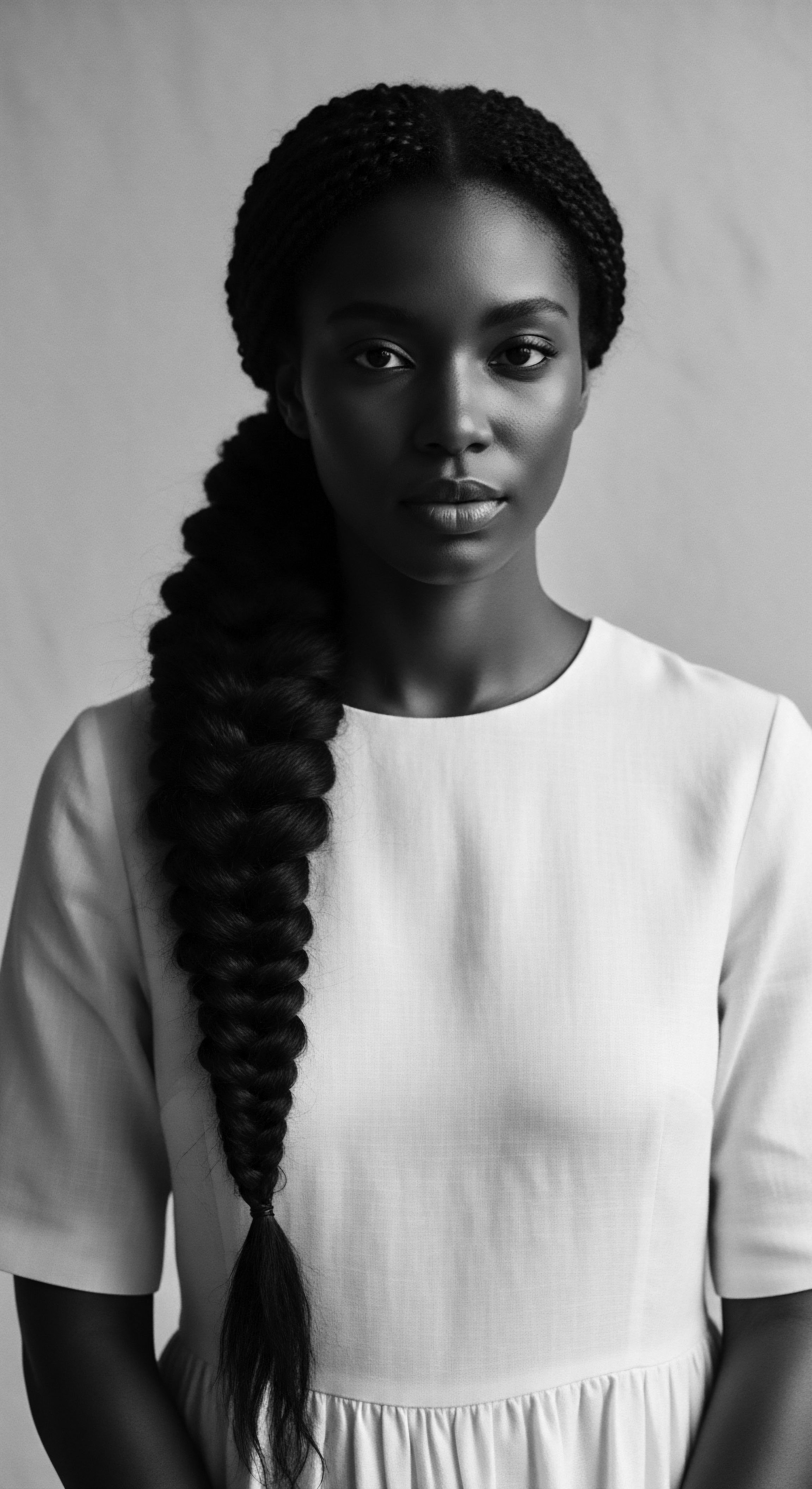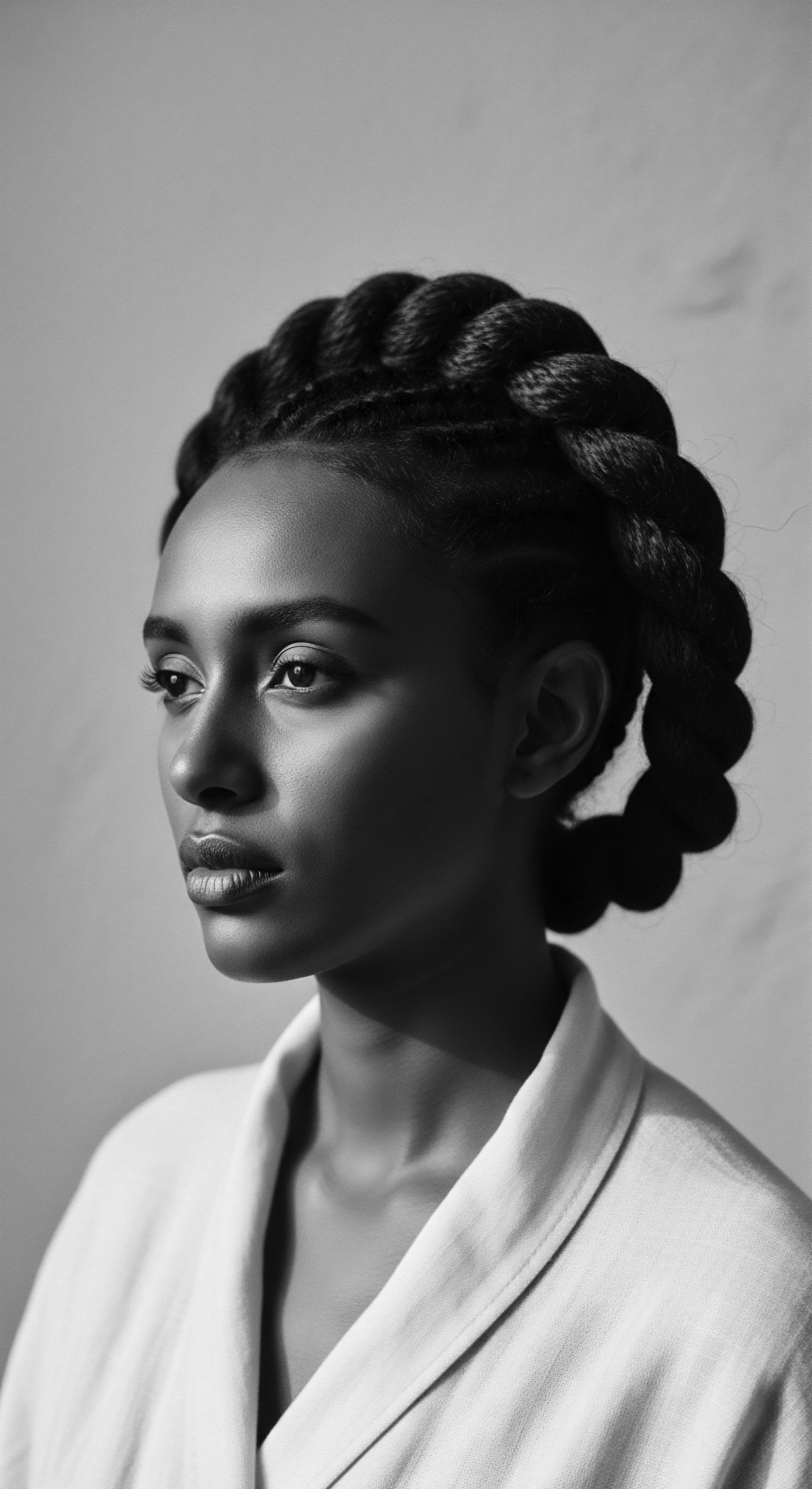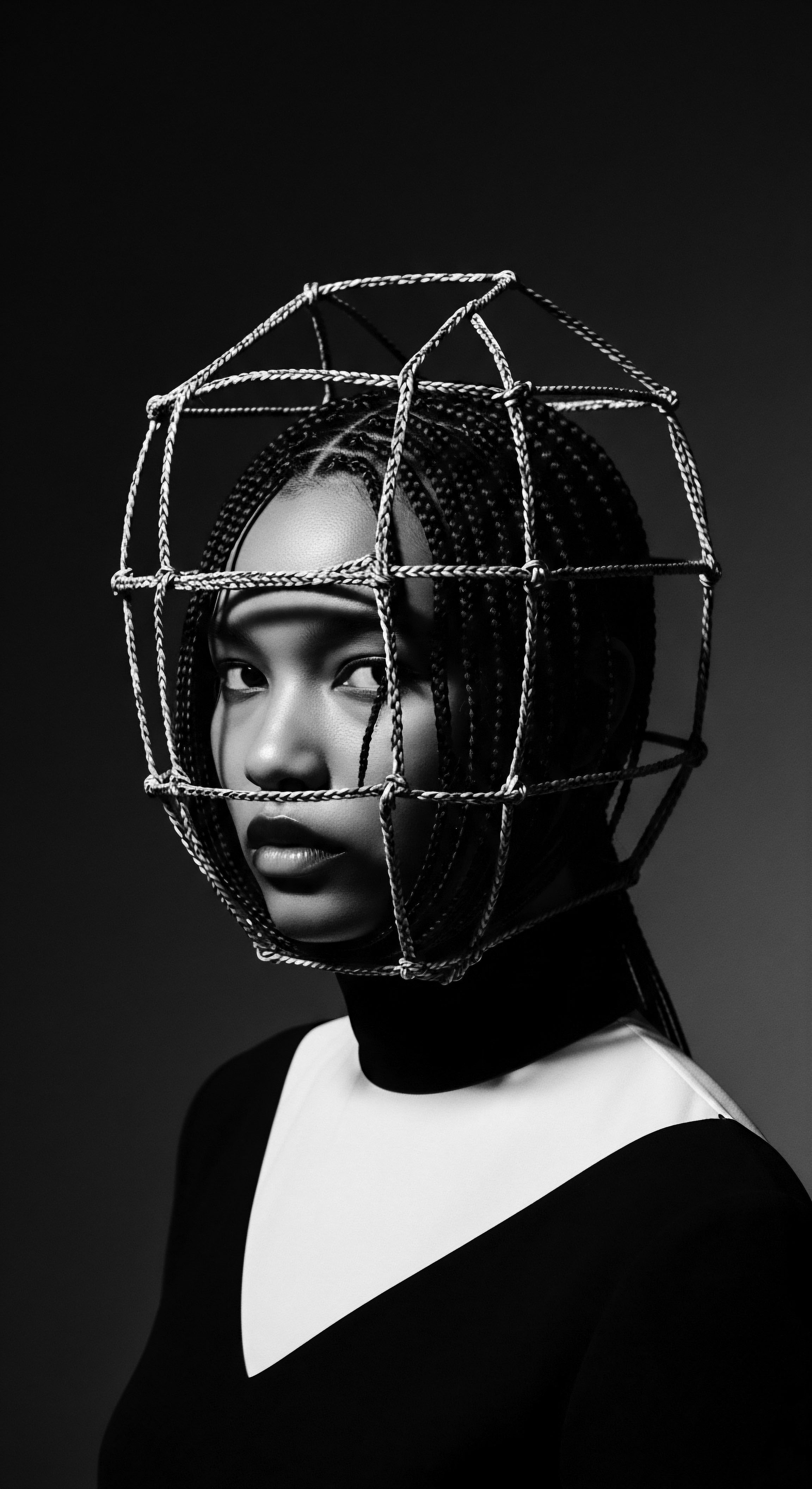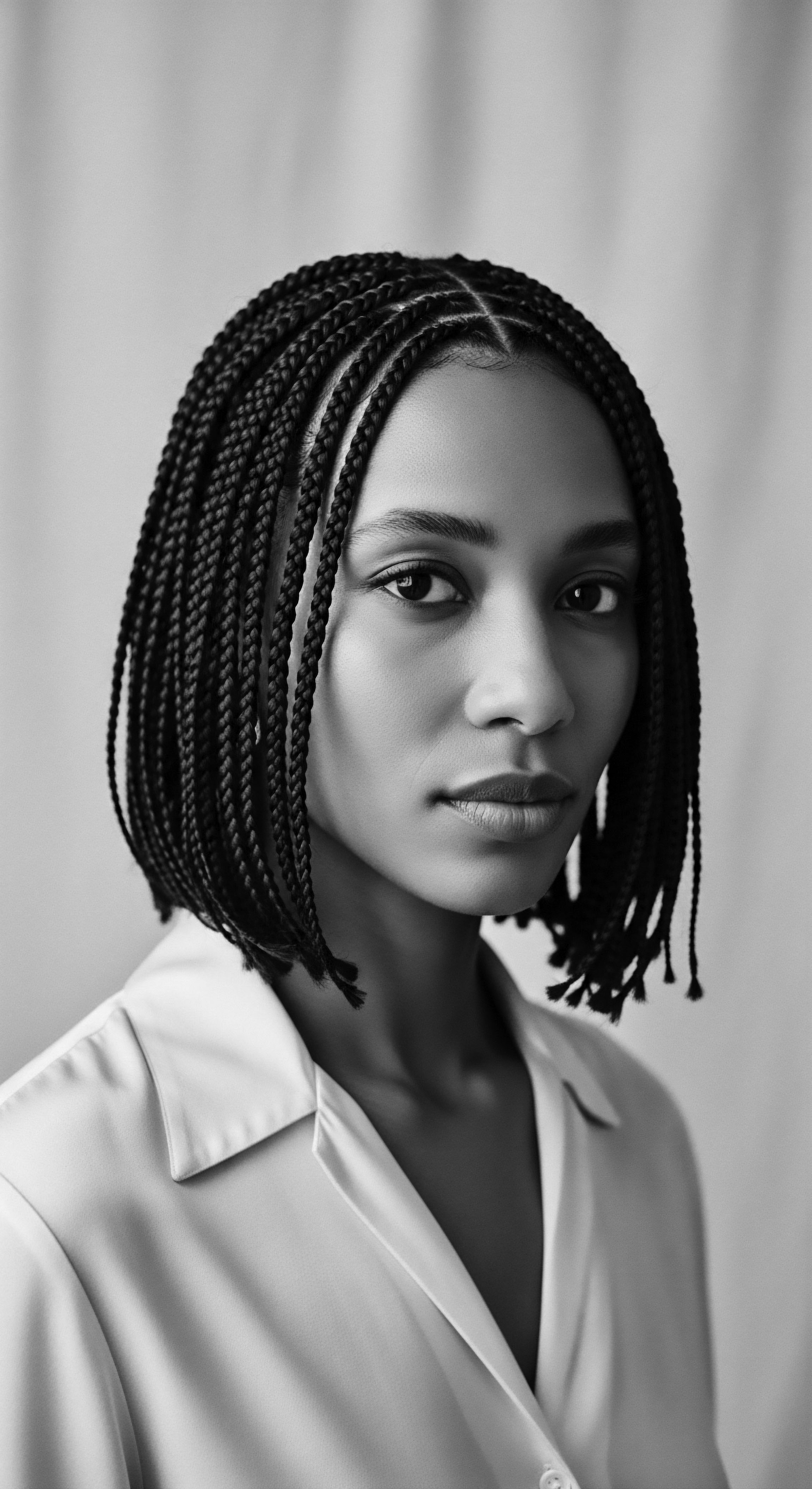
Roots
Across ancestral landscapes, where sun-drenched earth met verdant foliage, the henna plant, Lawsonia inermis, offered its crimson blessing. For generations, its leaves, transformed into a deep, earthy paste, graced skin and hair, telling stories of celebration, protection, and profound belonging. This ancient botanical, a silent witness to countless communal rituals, holds a cherished place in the heritage of hair, particularly within communities where textured strands coil and spring with life.
To ponder whether traditional henna applications varied for diverse textured hair types is to consider the very pulse of ancestral wisdom, a collective understanding passed through hands that knew intimately the language of each strand. It invites us to listen to the whispers of history, to discern how our forebears, with ingenuity born of necessity and deep attunement to nature, tailored their practices to the unique expressions of hair that grew from their crowns.
The very concept of hair, particularly within Black and mixed-race legacies, extends far beyond mere aesthetic. It has always been a powerful symbol, a visual dialect of identity, social standing, age, and spiritual connection. Before the ravages of displacement and forced assimilation, intricate styles and meticulous care practices, often performed communally, cemented bonds and preserved cultural narratives. In these vibrant contexts, henna found its place, not as a singular, rigid application, but as a fluid practice adapting to the inherent qualities of the hair it adorned.

Hair’s Elemental Being
Every strand of hair, irrespective of its coiled pattern or airy wave, begins its existence within the follicle, a tiny pocket nestled in the scalp. This microscopic factory produces keratin, the fibrous protein that forms the hair shaft. For textured hair, this journey from follicle to full strand carries its own distinct blueprint. The elliptical or flattened shape of the follicle determines the curl’s tightness and direction, contributing to the hair’s characteristic spring and volume.
This distinct architecture means natural oils, essential for moisture and protection, navigate a more circuitous route down the coiled shaft, often leading to natural dryness at the ends. Ancestral practitioners, intuitively observing these characteristics, developed approaches to care that honored this inherent structure.
Historically, understanding hair’s “type” went beyond modern classification systems. It was a qualitative knowing, gleaned from tactile experience and generations of shared wisdom. A woman in ancient Nubia would recognize the fine, delicate coils of a child’s hair, perhaps using a gentler henna paste, while a seasoned elder might prepare a richer application for her own robust, grey-dusted locks. The plant itself, Lawsonia inermis, contains lawsone, the natural dye molecule that forms the vibrant reddish-orange hue.
Lawsone bonds with the keratin protein in the hair shaft, coating it with color and adding a protective layer. This fundamental interaction remains constant across all hair textures. Yet, the outcome on different hair structures, and the methods used to achieve desired results, reveal a subtle yet significant interplay between universal principles and textured particularities.
Ancestral wisdom concerning hair transcended simple aesthetic pursuits, recognizing each strand as a living archive of heritage.

The Ancestral Lexicon of Hair
In many traditional societies, a vocabulary existed to describe hair’s various qualities, far removed from numerical curl typing. These terms spoke to density, sheen, resilience, and even the hair’s spiritual attributes. In West African communities, for example, hair was often described with words that evoked strength, vitality, or a connection to the divine. The traditional preparations of henna, therefore, would not have been rigidly dictated by a modern “type 4C” label, but by a holistic assessment of the individual’s hair health, its perceived needs, and the ceremonial purpose of the application.
For millennia, diverse societies across North Africa, the Middle East, and South Asia have turned to henna for its ability to adorn and nourish hair. The preparation of henna for hair often involved simply grinding dried leaves into a fine powder and mixing it with water to form a paste. Yet, slight alterations to this basic recipe, whether through added liquids, oils, or botanical admixtures, were common and likely tailored to the hair’s disposition.
For instance, traditions might include brewing black tea or coffee to deepen the color for darker hair or to enhance certain tones. The inclusion of oils, historically revered for their nourishing properties, would also serve a practical purpose for textured hair, helping to mitigate any potential dryness from the plant matter itself.
Consideration of henna’s natural tannins, which coat the hair to impart sheen and bulk, highlights an inherent benefit particularly suited for strands that might experience less natural lubrication or desire added body. This coating action, rather than penetrating and altering the hair’s core structure, provides a protective layer without permanent chemical alteration. This aligns with an ancestral ethos of working with hair’s natural state, rather than against it, preserving its vitality and unique textured character.

Ritual
The application of traditional henna, far from a mere cosmetic routine, was frequently a ritual, a communal gathering, or a deeply personal act of self-care steeped in generations of practice. The nuances within these rituals, when observed closely, speak volumes about how different hair textures were honored and tended. While the dye molecule, lawsone, interacts similarly with all keratin, the methods surrounding its application and subsequent removal held adaptations for the particularities of textured hair. This is where the wisdom of the hand, guided by observation and inherited knowledge, truly shone.

Preparations for Textured Hair
Did traditional henna applications differ for various textured hair types? The answer rests not in a fundamental change to henna’s dyeing mechanism, but in the subtle yet impactful adaptations of its preparation and post-application care. For textured hair, especially those with tighter curl patterns, ancestral practitioners understood the need for a paste that would coat evenly without becoming overly stiff or difficult to manage.
The texture of the henna paste itself varied ❉ some traditional methods resulted in a slimier, more mucilaginous paste due to different henna cultivars, while others were naturally creamier. A paste with good slip would certainly aid in coating tightly coiled strands more effectively, ensuring uniform color deposition from root to tip.
In some communities, the mixing liquid for henna might include herbal infusions, oils, or even fermented substances. These additions were not merely for scent or symbolism; they served practical purposes. For instance, the inclusion of conditioning agents, such as certain plant oils or even fenugreek paste, could counteract the potential for henna to leave hair feeling stiff, a common observation particularly for some textured hair types. This foresight prevented excessive dryness and maintained the hair’s pliability.
- Oiling ❉ Pre-henna oil treatments were common in some traditions, offering a protective barrier and aiding the rinse.
- Herbal Infusions ❉ Liquids like strong black tea or coffee brewed into the paste, sometimes to alter the color, also contributed to the mixture’s texture and hair benefits.
- Extended Soaking ❉ Allowing the henna paste to sit for several hours or overnight to release the dye, a widespread practice, would have resulted in a smoother, more potent consistency.

Application and Duration
The actual application process, while universally involving coating the hair, would see variations. For dense, highly textured hair, a generous application, ensuring every strand was thoroughly saturated, was essential. This often meant working in smaller sections than might be needed for straighter textures. The sheer volume and thickness of some textured hair could transform henna application into a longer, more labor-intensive process, often performed within the supportive context of a communal setting, fostering intergenerational bonds as women helped one another.
Traditional henna rituals reveal a deep intuitive understanding of hair, with subtle adaptations ensuring nourishment for every unique strand.
Duration of the application was another adaptable factor. While 2-4 hours was common, some traditions extended this to several hours or even overnight to achieve deeper color, particularly on grey hair. For textured hair, with its often lower porosity at the root and higher porosity at the ends (especially if previously chemically treated or damaged), this longer duration allowed the lawsone molecule more time to bind, ensuring a more uniform and lasting color. The result was a deep, rich red-brown hue, particularly valued for covering grey strands.

Rinsing and Post-Care Considerations
Perhaps the most significant practical difference in traditional henna applications for textured hair lies in the rinsing process. As modern practitioners note, if hair is very curly or coily, “it becomes harder to wash all of the particles out”. Ancestral wisdom would have surely recognized this.
Therefore, post-henna rituals likely incorporated methods to aid in the thorough removal of the paste. This might involve:
- Communal Washing ❉ Hair washing, much like braiding, was often a shared activity. Extra hands could aid in diligently rinsing thick, textured hair.
- Specific Rinses ❉ Traditions might have included acidic rinses (like diluted citrus juice or vinegar) or mucilaginous plant washes (from plants like aloe vera or okra) to help detangle and smooth the hair shaft, making the granular henna particles easier to slide off.
- Oil Application Post-Rinse ❉ Immediately after rinsing, a generous application of nourishing oils would seal in moisture, add luster, and counteract any temporary stiffness, a common side effect of henna that can be more pronounced on some textured hair. This also promotes hair health, something henna is known for.
The application of henna to locs, a style deeply rooted in heritage for many textured hair communities, stands as a testament to this adaptability. Henna can indeed add sheen, moisture, and fullness to locs, though thorough rinsing to remove all particles requires considerable attention. This signifies that the core benefits of henna were sought across all textured styles, with the methodology adjusting to the unique form factor.

Relay
The echoes of ancestral wisdom regarding hair care, particularly concerning henna, resonate through contemporary scientific understanding. While our forebears operated without the precise language of chemistry or molecular structure, their keen observation and iterative refinement of practices led to methods that modern science often validates or helps us comprehend more deeply. The question of how traditional henna applications differed for textured hair types finds a nuanced answer when bridging ancient rituals with current knowledge.

Chemistry of Connection, Cultural Adaptation
At its fundamental level, the interaction between henna and hair is universal. The lawsone molecule, found in the leaves of Lawsonia inermis, binds to the keratin protein present in the hair shaft, depositing a reddish-orange pigment. This process is not dependent on curl pattern or hair porosity in terms of its chemical adherence. However, the visible result and the tactile experience can vary significantly across the spectrum of textured hair.
Hair with higher porosity, common in some textured hair types due to more open cuticles, may absorb the color more intensely and quickly. Conversely, hair with lower porosity might require longer application times or warmer conditions to facilitate the dye uptake.
This variation speaks to the implicit knowledge held by traditional practitioners. They understood that different hair needed different attention. The very concept of “conditioning” hair with henna, often overlooked in modern contexts fixated on color, was an intrinsic part of ancestral practice. Henna, rich in natural conditioning agents, coats the hair shaft, contributing to strength and shine.
For textured hair, which can be prone to dryness due to its coiled structure, this added layer of protection and moisture was invaluable. The presence of tannins in henna also suggests benefits for scalp health, possessing antifungal properties that could mitigate issues like dandruff, a common concern across many hair types, including textured ones.
Modern scientific inquiry often illuminates the profound efficacy embedded within ancestral hair care practices.
A powerful illustration of this adaptability lies within the historical use of henna across various African communities. Consider the practices in Sudan, a region with a long and storied heritage of henna use for both skin and hair. As early as 3000 BCE, North Africa saw the application of henna. In Sudan, men were included in henna rituals, often before weddings, to match their wives and stand out.
While direct historical texts detailing distinct henna application techniques for varied Sudanese hair textures are scarce, the continuous and widespread use of henna for hair care within these communities for centuries inherently implies an adaptation of the practice to suit the predominant textured hair types. Henna was employed to “enhance hair, strengthen hair strands, and also, to beautify or ornate hair.” This consistent application across generations, for a population with diverse textured hair, speaks to the inherent flexibility and benefits of the tradition.
The Sudanese tradition, as described by Mohamed Zain, involved preparing henna from dried leaves, grinding them into powder, and mixing with water to create a thick paste, allowing it to sit for 30 minutes before use. This fundamental method, when applied to a variety of hair textures, would yield consistent staining due to the lawsone binding to keratin. However, the experience of the application and removal, as suggested by contemporary observations, would vary. For instance, the challenges of rinsing henna from very curly or coily hair are acknowledged in modern practice.
It is reasonable to surmise that traditional Sudanese communities, through lived experience and shared knowledge, developed communal washing rituals or specific post-henna rinses to address these practicalities, ensuring the paste was thoroughly removed while leaving the hair conditioned and vibrant. This collective wisdom, refined over generations, ensured that the benefits of henna were accessible and effectively delivered to all textured hair expressions within their societies.

Bridging Past and Present Understandings
The persistence of henna use within communities of color, particularly those with strong ancestral ties to Africa, the Middle East, and South Asia, stands in contrast to the historical pressures to conform to Eurocentric beauty ideals that often demonized textured hair. The natural hair movement of recent decades, celebrating coils, kinks, and waves, finds a natural ally in ancient practices like henna application. Henna strengthens and protects hair strands by binding with the hair’s cuticle, a benefit that is especially salient for textured hair, which can be more susceptible to breakage due to its structural characteristics.
Modern formulations of henna or “henna-based” products sometimes incorporate additional ingredients, such as cocoa butter, to improve slip and ease of rinsing for very curly or coily hair. This innovation, while seemingly contemporary, echoes the ancestral practice of adding oils or other plant-based conditioning agents to the henna mixture to enhance manageability and softness. The historical continuity, therefore, lies not in static, unchanging methods, but in the enduring principles of holistic hair health and adaptive care.
Consider the following comparison of traditional methods and modern insights into henna application for textured hair:
| Aspect Paste Consistency |
| Ancestral Practice Varied by cultivar and added botanicals; intuition guided thickness for spread. |
| Contemporary Understanding/Adaptation Aim for smooth, thick paste for even coating; may adjust with oils for slip on coily hair. |
| Aspect Application Time |
| Ancestral Practice Often extended, sometimes overnight, for deeper color and conditioning. |
| Contemporary Understanding/Adaptation Longer times for grey coverage or intense shades; awareness of porosity for optimal dye uptake. |
| Aspect Rinsing Efficiency |
| Ancestral Practice Communal washing, specific herbal rinses or acidic washes to aid removal. |
| Contemporary Understanding/Adaptation Recognition of difficulty in rinsing very curly/coily hair; use of conditioners or co-washes to aid particle removal. |
| Aspect Post-Application Care |
| Ancestral Practice Immediate oiling to seal moisture and enhance softness. |
| Contemporary Understanding/Adaptation Hydrating masks or oil treatments to counteract temporary stiffness; deep conditioning is beneficial. |
| Aspect Hair Health Benefits |
| Ancestral Practice Observed strengthening, shine, and scalp health; part of overall wellness. |
| Contemporary Understanding/Adaptation Scientific validation of lawsone binding to keratin for protection; antifungal properties for scalp health. |
| Aspect The journey of henna, from ancient rituals to modern interpretations, demonstrates a persistent dedication to nourishing and beautifying textured hair. |
The journey of henna through time, from its original use on ancient Egyptian pharaohs to its contemporary application in natural hair communities worldwide, paints a vivid picture of a practice that has consistently served the diverse needs of textured hair. The ‘difference’ in traditional applications for various textured hair types was not a fundamental deviation in how henna worked, but rather a wise adaptation of the preparation and care rituals surrounding it, ensuring efficacy and continued hair vitality across the rich spectrum of human hair heritage.

Reflection
To journey through the history of henna and its application on textured hair is to walk a path illuminated by generations of knowledge, a testament to the enduring wisdom of our ancestors. It reveals a story where natural elements meet human ingenuity, where the earth’s bounty is transformed into rituals of care, identity, and profound connection to heritage. The question of whether traditional henna applications varied for diverse textured hair types ultimately leads us not to a simple ‘yes’ or ‘no,’ but to an understanding of adaptation and reverence. Our ancestors, with an intuitive grasp of the hair’s nuanced needs, developed practices that allowed henna to serve as a protector, a beautifier, and a symbol across the glorious spectrum of textured strands.
This exploration becomes a mirror, reflecting Roothea’s ‘Soul of a Strand’ ethos. It reminds us that every coil, every wave, every kink holds within its very structure the story of a lineage, a community, a resilience that has weathered storms and emerged vibrant. Henna, as a part of this living, breathing archive of hair traditions, stands as a symbol of self-acceptance and a conscious choice to honor what grows naturally from our crowns. Its journey from elemental biology and ancient practices, through the living traditions of care and community, to its role in voicing identity and shaping futures, is a continuous thread in the vast tapestry of textured hair heritage.
The lessons gleaned from these historical applications extend beyond just the botanical or the chemical. They speak to the communal spirit of hair care, where knowledge was shared, hands worked together, and beauty was a collective endeavor. They urge us to seek a holistic connection to our strands, seeing them not as something to be ‘tamed’ or ‘altered,’ but as an integral aspect of our being, worthy of gentle wisdom and ethical consideration. In choosing to understand and perhaps re-engage with such ancestral practices, we are not simply reviving old methods; we are tending to a legacy, acknowledging the ingenious spirit of those who came before us, and reaffirming the timeless beauty of textured hair in all its forms.

References
- Clapperton, H. (1829). Journal of a Second Expedition into the Interior of Africa, from the Bight of Benin to Soccatoo. John Murray.
- Alassadi, F. (2023). Feminism, Medicine and Culture ❉ How chemical/medicinal. Retrieved from Google Search.
- Garodia, K. (2021). Certified Trichologist, cited in Healthline article “Henna Benefits for Hair ❉ How to Get Rich Auburn Locks”.
- Mogga, N. (2012). Henna is a South Sudanese custom adopted from Arab and Middle Eastern cultures. Taste of South Sudan.
- Saksena, S. (1979). Mehndi ❉ The Traditional Indian Art of Henna Body Painting. India International Centre Quarterly.
- Sharaby, M. (1980s). Ethnographic research on Arab Yemen communities in Israel.
- Wall, F. (1972). History of Hair Colouring in Sagarin & Balsam.
- Redgrove, S. & Foan, G. (1929). The Book of Cosmetics .
- Pointer, B. (2005). The Chemistry and Technology of the Cosmetics Industry .
